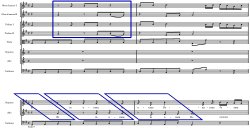
The Mass in B minor, BWV 232, is an extended setting of the Mass ordinary by Johann Sebastian Bach. The composition was completed in 1749, the year before the composer's death, and was to a large extent based on earlier work, such as a Sanctus Bach had composed in 1724. Sections that were specifically composed to complete the Mass in the late 1740s include the "Et incarnatus est" part of the Credo.

Wir danken dir, Gott, wir danken dir, BWV 29, is a sacred cantata by Johann Sebastian Bach. He composed it in Leipzig in 1731 for Ratswechsel, the annual inauguration of a new town council, and first performed it on 27 August of that year. The cantata was part of a festive service in the Nikolaikirche. The cantata text by an unknown author includes in movement 2 the beginning of Psalm 75, and as the closing chorale the fifth stanza of Johann Gramann's "Nun lob, mein Seel, den Herren". Bach scored the work in eight movements for four vocal parts and a festive Baroque orchestra of three trumpets, timpani, two oboes, strings, an obbligato organ and basso continuo. The organ dominates the first movement Sinfonia which Bach derived from a Partita for violin. The full orchestra accompanies the first choral movement and plays with the voices in the closing chorale, while a sequence of three arias alternating with two recitatives is scored intimately.
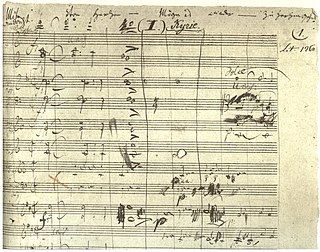
The Missa solemnis in D major, Op. 123, is a Solemn Mass composed by Ludwig van Beethoven from 1819 to 1823. It was first performed on 7 April 1824 in Saint Petersburg, Russia, under the auspices of Beethoven's patron Prince Nikolai Golitsyn; an incomplete performance was given in Vienna on 7 May 1824, when the Kyrie, Credo, and Agnus Dei were conducted by the composer. It is generally considered one of the composer's supreme achievements and, along with Bach's Mass in B minor, one of the most significant Mass settings of the common practice period.

Weinen, Klagen, Sorgen, Zagen, BWV 12, is a church cantata by Johann Sebastian Bach. He composed it in Weimar for Jubilate, the third Sunday after Easter, and led the first performance on 22 April 1714 in the Schlosskirche, the court chapel of the Schloss in Weimar.

Ihr werdet weinen und heulen, BWV 103, is a cantata by Johann Sebastian Bach, a church cantata for the third Sunday after Easter, called Jubilate.

Gioachino Rossini's Petite messe solennelle was written in 1863, possibly at the request of Count Alexis Pillet-Will for his wife Louise to whom it is dedicated. The composer, who had retired from composing operas more than 30 years before, described it as "the last of my péchés de vieillesse".

Tönet, ihr Pauken! Erschallet, Trompeten!, BWV 214, is a secular cantata by Johann Sebastian Bach, composed in 1733 for the birthday of Maria Josepha, Queen of Poland and Electress of Saxony. Classified in published editions as a dramma per musica, it is based on a libretto by an unknown author. The piece has the dedicatee addressed by allegorical figures representing Roman and Greek goddesses of war and peace. It is structured as nine movements, and scored for four vocal parts and a festive Baroque orchestra with trumpets, timpani, flutes, oboes and strings. Choral movements frame a series of alternating recitatives and arias. Bach led the first performance with the Collegium Musicum at the Zimmermannsches Caffeehaus on 8 December 1733.

Herr, gehe nicht ins Gericht mit deinem Knecht, BWV 105 is a church cantata by Johann Sebastian Bach. He composed it in Leipzig for the ninth Sunday after Trinity and first performed it on 25 July 1723. The musicologist Alfred Dürr has described the cantata as one of "the most sublime descriptions of the soul in baroque and Christian art".
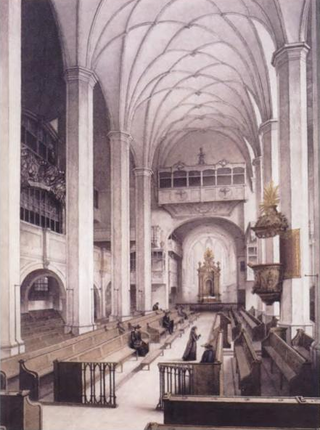
Du wahrer Gott und Davids Sohn, BWV 23, is a church cantata by Johann Sebastian Bach. He composed it in Köthen between 1717 and 1723 for Quinquagesima Sunday and performed it as an audition piece for the position of Thomaskantor in Leipzig on 7 February 1723. The Sunday was the last occasion for music at church before the quiet time of Lent.

Johann Sebastian Bach composed the church cantata Brich dem Hungrigen dein Brot, BWV 39, in Leipzig and first performed on 23 June 1726, the first Sunday after Trinity that year. Three years earlier, on the first Sunday after Trinity in 1723, Bach had taken office as Thomaskantor and started his first cycle of cantatas for Sundays and Feast Days in the liturgical year. On the first Sunday after Trinity in 1724, he began his second cycle, consisting of chorale cantatas. The cantata Brich dem Hungrigen dein Brot is regarded as part of Bach's third cantata cycle which was written sporadically between 1725 and 1727.

Gloria in excelsis Deo, BWV 191, is a church cantata written by the German Baroque composer Johann Sebastian Bach, and the only one of his church cantatas set to a Latin text. He composed the Christmas cantata in Leipzig probably in 1742, for a celebration by the university of Leipzig. The composition's three movements all derive from the Gloria of Bach's 1733 Kyrie–Gloria Mass, which the composer would later use as the Gloria of his Mass in B minor.
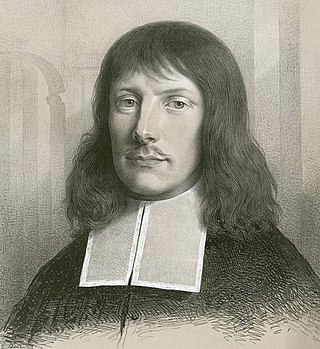
Herr Gott, Beherrscher aller Dinge, BWV 120.2, is a wedding cantata by Johann Sebastian Bach. He composed and first performed it in Leipzig, most likely in 1729.

Schauet doch und sehet, ob irgend ein Schmerz sei, BWV 46, is a church cantata by Johann Sebastian Bach. He composed it for the tenth Sunday after Trinity and it was first performed on 1 August 1723 in Leipzig.

Erschallet, ihr Lieder, erklinget, ihr Saiten!, BWV 172, is a church cantata by Johann Sebastian Bach, composed in Weimar for Pentecost Sunday in 1714. Bach led the first performance on 20 May 1714 in the Schlosskirche, the court chapel in the ducal Schloss. Erschallet, ihr Lieder is an early work in a genre to which he later contributed complete cantata cycles for all occasions of the liturgical year.
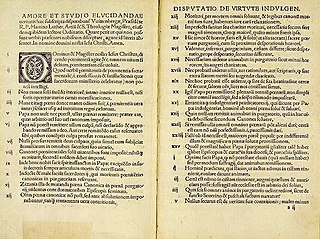
Johann Sebastian Bach composed the church cantata Gott der Herr ist Sonn und Schild, BWV 79, in Leipzig in 1725, his third year as Thomaskantor, for Reformation Day and led the first performance on 31 October 1725.

Christen, ätzet diesen Tag, BWV 63, is a church cantata by Johann Sebastian Bach. He composed the Christmas cantata for the First Day of Christmas, possibly in 1713 for the Liebfrauenkirche in Halle. He performed it again for his first Christmas as Thomaskantor in Leipzig, on 25 December 1723.
In allen meinen Taten, BWV 97, is a church cantata by Johann Sebastian Bach. He composed the chorale cantata in Leipzig in 1734 for an unspecified occasion. The text consists of the unchanged words of the hymn by Paul Fleming (1642).

Bach's Missa of 1733, BWV 232 I, is a Kyrie–Gloria Mass in B minor, composed in 1733 by Johann Sebastian Bach. It is an extended missa brevis consisting of a Kyrie in three movements and a Gloria in nine movements. Bach started to compose it, partly based on earlier work, after the death of his sovereign Augustus the Strong, dedicating it to the latter's son and successor, Frederick August II, in a letter dated 27 July 1733. At the time, Bach was in his tenth year as Lutheran church musician in Leipzig, while the Catholic court of the sovereign Elector of Saxony was located in Dresden. Bach sent performance parts of his Missa to Dresden while he kept the autograph score in Leipzig. Upon arrival in Dresden, the Mass was not added to the repertoire of the Catholic court chapel, but instead the parts, and Bach's dedication letter, were archived in the sovereign's library.

The Magnificat in E-flat major, BWV 243a, also BWV 243.1, by Johann Sebastian Bach is a musical setting of the Latin text of the Magnificat, Mary's canticle from the Gospel of Luke. It was composed in 1723 and is in twelve movements, scored for five vocal parts and a Baroque orchestra of trumpets, timpani, oboes, strings and basso continuo including bassoon. Bach revised the work some ten years later, transposing it from E-flat major to D major, and creating the version mostly performed today, BWV 243.
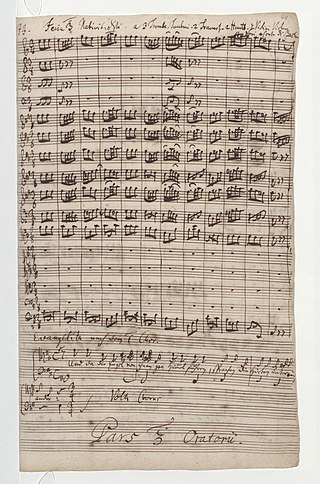
Herrscher des Himmels, erhöre das Lallen, BWV 248III, is a 1734 church cantata for the third day of Christmas (27 December) which Johann Sebastian Bach composed as the third part of his Christmas Oratorio. The Christmas cantata was first performed in 1734, in Leipzig. Bach was then Thomaskantor, responsible for music at four churches in Leipzig, a position he had assumed in 1723.























